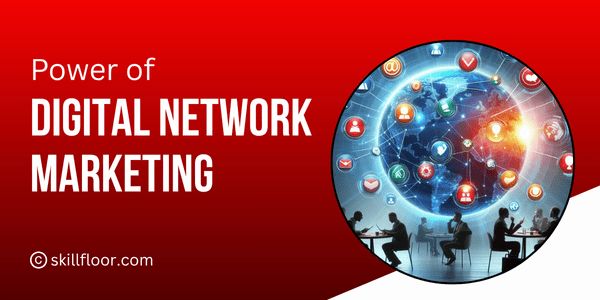R vs Python for Data Science: A Friendly Comparison
Discover the future of data science: R vs Python. This friendly comparison highlights the strengths and benefits of each language. Choose your path to success!

Greetings, aspiring data scientists! When it comes to data science, two programming languages have emerged as the titans of the field: R and Python. In this friendly blog, we will explore the similarities, differences, and unique features of R and Python, helping you make an informed choice for your data science journey. Whether you're a beginner or an experienced data enthusiast, understanding the strengths and weaknesses of each language is crucial in harnessing their power effectively. So, let's dive into the world of R and Python and discover which language best suits your data science needs.
Ease of Use and Learning Curve
Both R and Python have their own learning curves, but they offer different experiences for beginners. Python, known for its simplicity and readability, has a gentle learning curve, making it more approachable for those new to programming. Its syntax is intuitive and resembles English-like statements, making it easier to understand and write code. On the other hand, R is designed specifically for data analysis and statistics, offering a rich set of built-in functions and packages. While R may have a steeper learning curve for beginners, its focus on statistical analysis makes it a favorite among statisticians and researchers.
Data Manipulation and Analysis
When it comes to data manipulation and analysis, both R and Python excel in their own ways. R provides a wide range of specialized packages like dplyr and tidyr, which offer powerful data manipulation capabilities. R's data frames provide a convenient and efficient structure for working with data. Python, on the other hand, has the Pandas library, which is widely used for data manipulation and analysis tasks. Pandas offers a versatile DataFrame object, allowing for efficient data wrangling and cleaning. Additionally, Python's NumPy library provides support for numerical operations, making it ideal for scientific computing. Whether you prefer the syntax and functionality of R's specialized packages or the versatility of Pandas and NumPy in Python, both languages have robust tools for data manipulation and analysis.
Visualization and Plotting
Data visualization is a crucial aspect of data science, allowing us to communicate insights effectively. R has long been praised for its visualization capabilities with packages like ggplot2, which offer highly customizable and aesthetically pleasing visualizations. R's syntax for creating plots is concise and intuitive, enabling users to create publication-quality visuals with ease. Python, on the other hand, has libraries like Matplotlib and Seaborn that provide comprehensive plotting functionalities. While Python's syntax may be slightly more verbose, it offers flexibility and customization options. Additionally, Python's interactive visualization libraries, such as Plotly and Bokeh, allow for dynamic and interactive visualizations. Whether you prefer the elegance of R's ggplot2 or the versatility of Python's plotting libraries, both languages offer powerful tools for visualizing data.
Statistical Analysis and Modeling
Both R and Python are widely used for statistical analysis and modeling. R has a rich ecosystem of statistical packages, such as stats, lme4, and survival, which provide extensive functionality for statistical modeling, hypothesis testing, and regression analysis. R's focus on statistics and its built-in functions make it a popular choice among statisticians. Python, on the other hand, offers libraries like SciPy and scikit-learn, which provide a wide range of statistical functions and machine learning algorithms. Python's scikit-learn library is particularly renowned for its simplicity and scalability in implementing machine learning models. Additionally, Python's ecosystem offers specialized libraries for deep learning, such as TensorFlow and PyTorch. Whether you prefer R's statistical packages or Python's machine learning libraries, both languages offer powerful capabilities for statistical analysis and modeling.
Integration and Community Support
Integration with other tools and platforms is an essential aspect to consider in data science. Python's versatility shines in its ability to integrate with various tools, libraries, and frameworks. Python's extensive library ecosystem covers almost every aspect of data science, from web scraping to natural language processing. Moreover, Python integrates seamlessly with big data technologies like Apache Spark and Hadoop, making it a popular choice for working with large datasets. R, on the other hand, has strong integration with statistical software like SAS and SPSS. R's extensive package repository, CRAN, provides a vast collection of community-contributed packages, expanding its functionality further. Both languages have active communities that contribute to the development of packages, tutorials, and forums, providing excellent support to users.
Performance and Scalability
When it comes to performance and scalability, Python and R have some differences. R, being primarily designed for data analysis and statistics, may not perform as efficiently as Python when handling large datasets or complex computations. Python, on the other hand, benefits from its versatility and integration with high-performance libraries like NumPy and Pandas, allowing for faster execution of operations on large datasets. Additionally, Python's ability to leverage distributed computing frameworks like Apache Spark enables scaling data processing across clusters. However, it's worth noting that R has made significant improvements in recent years with the introduction of packages like data.table and dplyr, which optimize data processing speed. When dealing with big data or computationally intensive tasks, Python may have an edge in terms of performance and scalability.
Industry Adoption and Job Market
When considering a programming language for data science, it's essential to consider industry adoption and the job market. Python has gained tremendous popularity in recent years and has become the go-to language for many data science applications. Its versatility, ease of use, and extensive library ecosystem have led to widespread adoption in various industries, including technology, finance, healthcare, and more. Many organizations are actively seeking data scientists proficient in Python. R, on the other hand, has a strong foothold in academia, research, and certain industries, such as pharmaceuticals and social sciences. While the demand for R may not be as widespread as Python, there are still ample opportunities for R experts in specialized domains. Ultimately, keeping an eye on industry trends and understanding the specific requirements of your target job market can help inform your language choice.
Personal Preference and Learning Resources
Last but not least, personal preference plays a significant role in choosing a data science language. Some individuals may find R's syntax and functionality more intuitive, especially if they have a background in statistics or research. Others may prefer Python's versatility and readability. It's important to consider your personal strengths and interests when making a choice. Additionally, the availability of learning resources and community support is crucial for skill development. Both R and Python have a vast array of tutorials, online courses, and community forums that cater to learners of all levels. Exploring these resources and considering the availability of support can enhance your learning experience and help you overcome any obstacles you may encounter along the way.
In the great debate of R vs Python for data science, there is no definitive winner. Both languages offer unique strengths and capabilities that make them suitable for various data science tasks. R excels in statistical analysis, elegant visualizations, and research-oriented domains, while Python's versatility, performance, and industry adoption make it a popular choice for general-purpose data science. Ultimately, the choice between R and Python depends on your specific needs, preferences, and the industry landscape you wish to pursue. Whichever language you choose, remember that the key to success lies in mastering the underlying principles of data science and leveraging the tools at your disposal to extract valuable insights from data.



























































